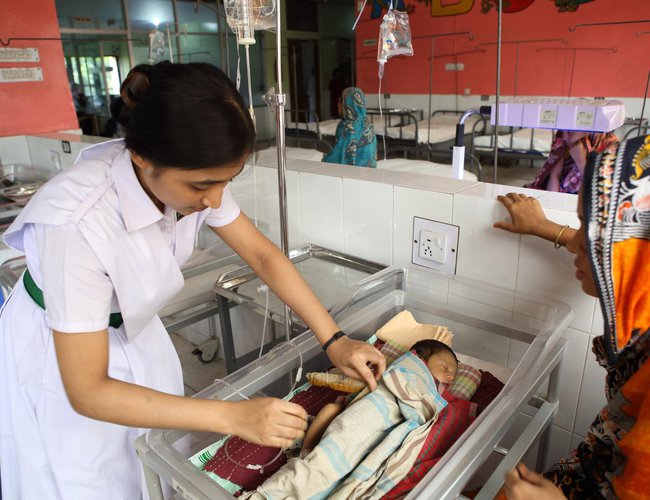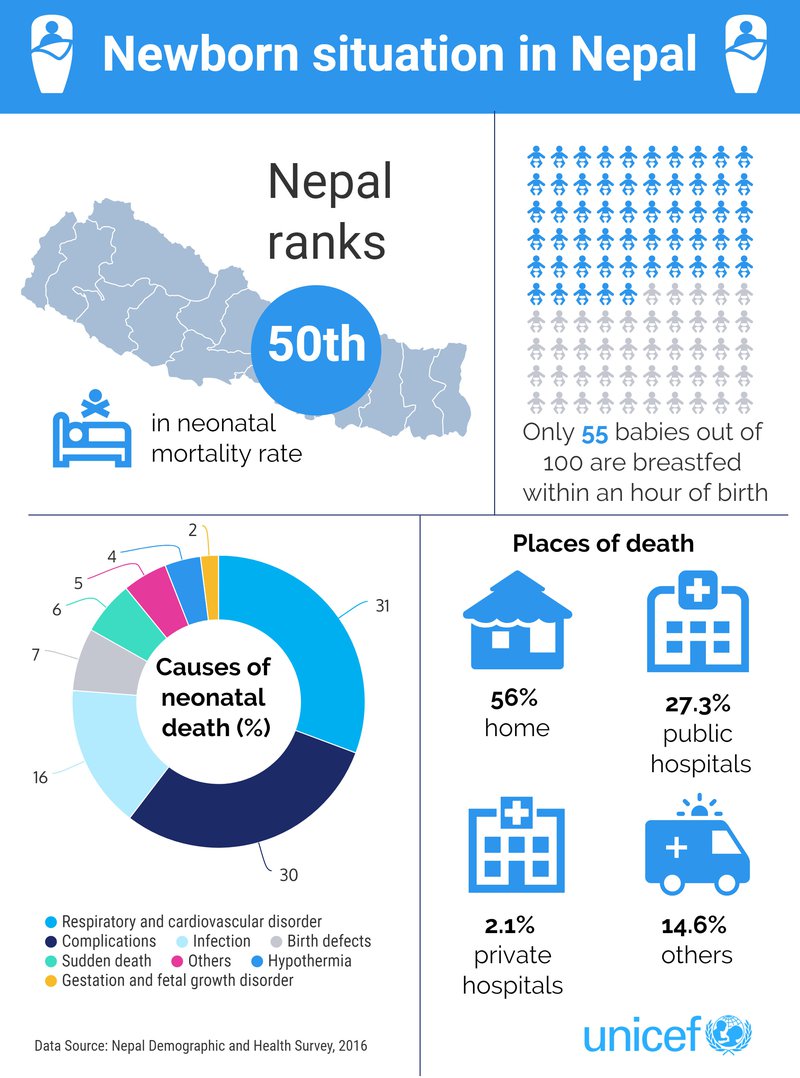
At a time when global focus is shifting to the alarmingly high rates of newborn deaths, UNICEF today launched Every Child ALIVE, a worldwide campaign to demand and deliver solutions on behalf of the world’s newborns along with a new report on newborn mortality.
In Nepal, the campaign will complement the government’s commitments and efforts to reduce newborn deaths and stillbirths through its 20-year Every Newborn Action Plan (NENAP) launched in 2016. NENAP aims to reduce newborn mortality to below 11 deaths per 1000 live births and a stillbirth rate of less than 13 stillbirths per 1000 total births by 2035 from current rate 23 and 18.4 respectively. It seeks to do so by:
Improving quality of maternal and newborn care in the health facilities
Supporting the generation of evidence to strengthen information management systems in hospitals
Enhancing the capacity of local structures for resource allocation for maternal and newborn care referrals
According to the report, in low-income countries, the average newborn mortality rate is 27 deaths per 1,000 births. In high-income countries, that rate is 3 deaths per 1,000. Newborns from the riskiest places to give birth are up to 50 times more likely to die than those from the safest places. In these places, pregnant women are much less likely to receive assistance during delivery due to poverty, conflict and weak institutions.
According to the Nepal’s Demographic Health Survey 2016, 1 in 48 babies die in their first 28 days of life making up to 13,000 newborn deaths every year in Nepal.
According to a press release issued by UNICEF, more
than 80 per cent of newborn deaths are due to prematurity, complications during
birth or infections such as pneumonia and sepsis, the report says. These deaths
can be prevented with access to well-trained midwives, along with proven
solutions like clean water, disinfectants, breastfeeding within the first hour,
skin-to-skin contact and good nutrition. However, a shortage of well-trained
health workers and midwives means that thousands don’t receive the life-saving
support they need to survive. For example, while in Norway there are 218
doctors, nurses and midwives to serve 10,000 people, that ratio is 2.3 per
10,000 in Nepal
Through the Every Child ALIVE global campaign UNICEF is issuing an urgent appeal to governments, health care providers, donors, the private sector, families and businesses to keep every child alive by:
Recruiting, training, retaining and managing sufficient numbers of doctors, nurses and midwives with expertise in maternal and newborn care;
Guaranteeing clean, functional health facilities equipped with water, soap and electricity, within the reach of every mother and baby;
Making it a priority to provide every mother and baby with the life-saving drugs and equipment needed for a healthy start in life; and
Empowering adolescent girls, mothers and families to demand and receive quality care.
- Weather Forecast: Partly To Generally Cloudy Gandaki, Lumbini, Karnali And Sudur Pashchim Provinces
- Apr 18, 2024
- FNCCI President Dhakal Urges To Invest In Tourism Infrastructure
- Apr 17, 2024
- Halesi Mahadev Temple and Ram Nawami Festival
- Apr 17, 2024
- The Breakthrough Of The Nagdhunga Main Tunnel: Pride Of Country
- Apr 17, 2024
- Ram Nawami 2024: Importance And Significant For Hindus
- Apr 17, 2024
















